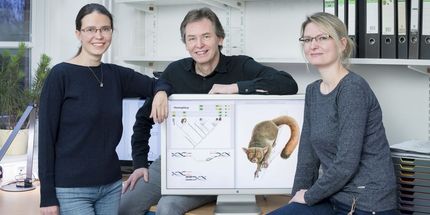Mobilization of jumping genes in pluripotent stem cells may affect safety of stem cell-based therapy
Advertisement
Reprogramming of human cells into induced pluripotent stem cells (hiPSCs) activates normally repressed, endogenous mobile DNA (retrotransposons; jumping genes), which can result in new insertions in the stem cell genome. The function of differentiated cells derived from such stem cells could be hampered by these mutations. Moreover, these retrotransposon insertions can affect genes relevant to tumor development. These findings raise questions regarding the biosafety of hiPSC-derived therapeutic cells.
Human induced pluripotent stem cells (hiPSCs) hold substantial promise for biomedical applications because they have the potential to give rise to every cell type of the human body. Amongst other applications, hiPSCs have the potential to be applied in regenerative medicine for autologous cell therapies. To this end, patients’ somatic cells are reprogrammed into hiPSCs, differentiated into the favored, therapeutically relevant cell type, and finally administered to the patient. However, during reprogramming and hiPSC cultivation, genetic and epigenetic aberrations occur.
The scientists uncovered that mobilization and resulting new insertions of endogenous jumping genes occurred in the genomes of 4 out of 8 analyzed hiPSC lines both during reprogramming and subsequent hiPSC cultivation.
Mobilization of jumping genes occurred at a frequency of ~1 retrotransposition event per hiPSC. Mobilization of preexisting endogenous L1 elements also generated new functional L1 copies which again are able to spread throughout the genome and give rise to new gene mutations. Jumping of endogenous transposable elements causes new, potentially mutagenic insertions that can influence the function of the host cell and participate in the process of transformation to a tumor cell. “Genomic integrity of pluripotent stem cells can be impaired by the mobilization of endogenous transposable elements which is mediated by endogenous L1 activity. This raises the question to what extent the safety of cellular therapies is affected if differentiated cells derived from such hiPSCs are applied”, said Dr Schumann explaining the significance of their findings. The research group will address these questions as a next step. From a regulatory point of view, testing the safety of these cells before they are applied in a potentially therapeutic setting would reduce the risk associated with these cells.
Original publication
Klawitter S, Fuchs NV, Upton KR, Muñoz-Lopez M, Shukla R, Wang J, Garcia-Canadas M, Lopez-Ruiz C, Gerhardt DJ, Sebe A, Grabundzija I, Merkert S, Gerdes P, Pulgarin JA, Bock A, Held U, Witthuhn A, Haase A, Sarkadi B, Löwer J, Wolvetang EJ, Martin U, Ivics Z, Izsvák Z, Garcia-Perez JL, Faulkner GJ, Schumann GG; "Reprogramming triggers endogenous L1 and Alu retrotransposition in human induced pluripotent stem cells"; Nature Comm.; 2015


























































